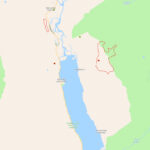Selkirk College pursues environmental sustainability
Selkirk College, along with other educational institutions in North
America and the world, is actively pursuing environmental sustainability
in all facets of its locations, hoping to reduce its overall impact on
the environment.
Last year, the Environmental Sustainability (ES) Committee at Selkirk
College hired Renewable Resource Instructor Derek Marcoux, along with
two students, Suzanne Fordyce and Jeremy Prahl, to provide a “State of
the Environment” report which would provide a benchmark set of data,
marking the current status of environmental conditions at the campuses
located in Castlegar, Trail and Nelson, BC. Areas of energy, emissions,
waste, transportation, water, biodiversity, products and services and
environmental compliance were researched and included in the study.
“As a leader in post secondary education, Selkirk College is ideally
poised to influence a generation of thinking and social behavior related
to reducing impact of its operations on the environment,” explains
Marcoux. “This report has given the college a solid starting point and
the basis to create an action plan to reduce its environmental
impact.”
The Province of B.C. has taken bold new steps to meeting carbon
neutrality through the establishment of the Greenhouse Gas Reduction
Targets Act (Province of BC, 2007) that requires post secondary
institutions to be carbon neutral by 2010 (Province of BC, 2009). It has
set reductions of greenhouse gases to be 33% below 2007 by the year 2020
and 80% below 2007 levels by the year 2050 (Province of BC, 2007).
Based on data derived mostly from 2008, Marcoux found that a total of
56,270 Gigajoules (GJ) of energy were used for stationary heating and
air conditioning at the campuses; almost half (44%) of the energy
consumed by Selkirk College is derived from hydroelectric energy which
is a non-CO2 emitting source of energy; 231.5 metric tonnes of solid
waste went to regional landfills; approximately 45% of the paper
purchased in 2008 was recycled; greenhouse gas emissions (GHG) from
stationary and mobile combustion were approximately 2,150 metric tonnes
in 2008 from all sources, and the college consumes over an estimated
170,000 cubic meters of water annually throughout its facilities.
The report contained recommendations to help Selkirk College get
started with its sustainability action plan. Recommendations included
creating a part-time sustainability coordinator position; ensuring that
maximum energy conservation methods are utilized at all college
facilities when completing upgrades; implementing a
composting program; investigating options for gray water recycling from
effluent treatment plant at the Castlegar Campus in order to reduce the
discharge into the Kootenay river system, and investigating options to
reduce or eliminate pesticide use on all lawns and gardens where
practicable.
While smaller regional colleges such as Selkirk have a more difficult
time achieving environmental sustainability due to less available
resources, Selkirk College is leveraging off available resources as best
they can to follow the leadership of the larger institutions.
For more information or to download a copy of the State of the
Environment report, visit selkirk.ca/research/sustainability.


























Comments